Category Archives: Tests and Assessments
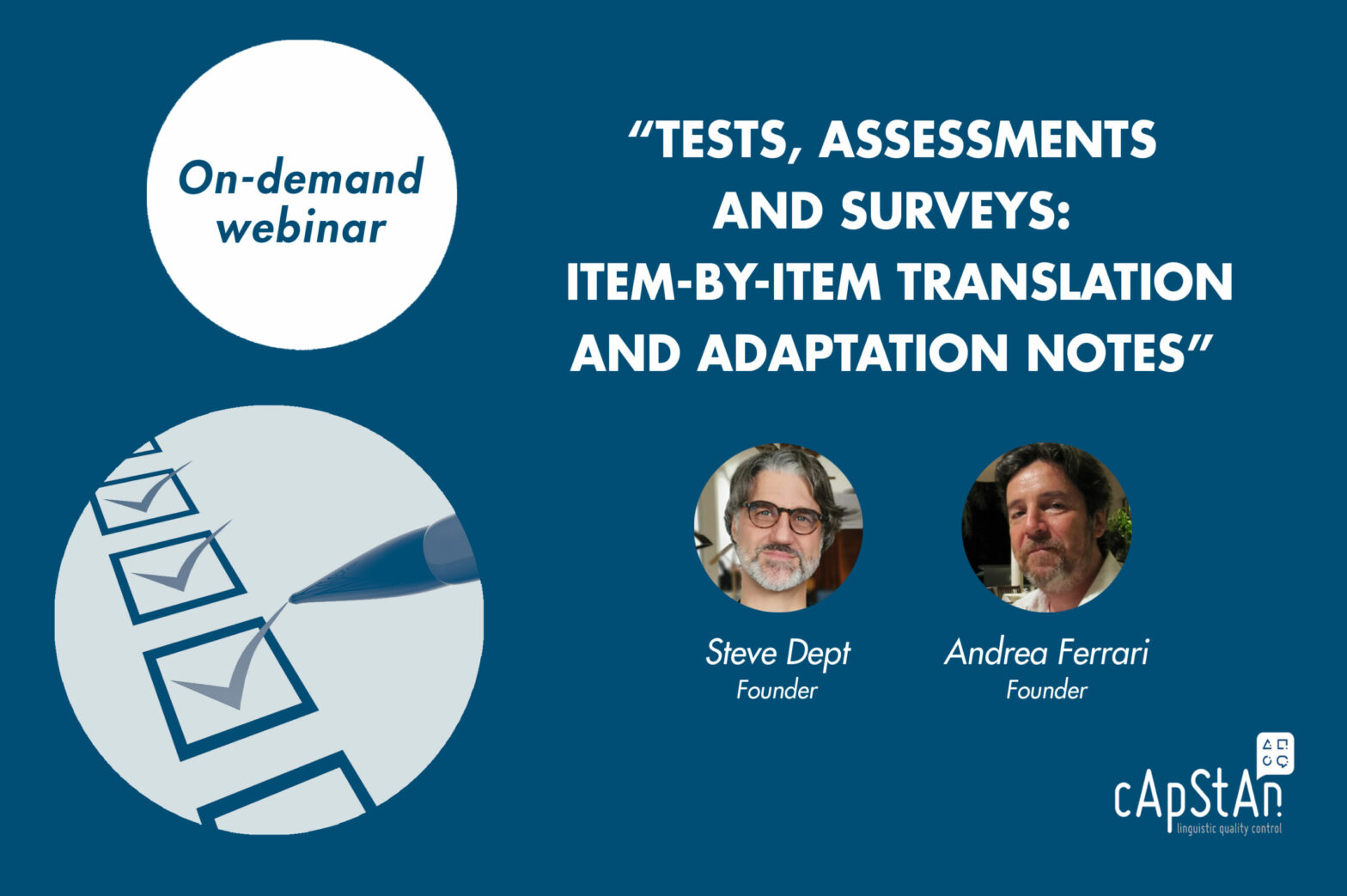
On-Demand Webinar – Tests, Assessments and Surveys: Item-by-item translation and adaptation notes
You need to deploy a test or questionnaire in multiple countries and languages? The reliable validation of translated data collection instruments requires—among other things—a robust QA design. A design that focuses on equivalence, comparability as well as appropriateness in each target culture. Based on +20 years of experience as LQA practitioners, Steve and Andrea profess …
“On-Demand Webinar – Tests, Assessments and Surveys: Item-by-item translation and adaptation notes”
Read More
How to avoid the hidden threats to translation quality in computer-based assessments
by Steve Dept, cApStAn CEO In the first two decades of this century, many test providers have migrated from pencil-and-paper assessments to computer-based assessments and this has driven a surge in sophisticated testing platforms. In some of these computer-based assessments environments, however, scant attention was given to multilingual testing. What many stakeholders do not seem …
“How to avoid the hidden threats to translation quality in computer-based assessments”
Read More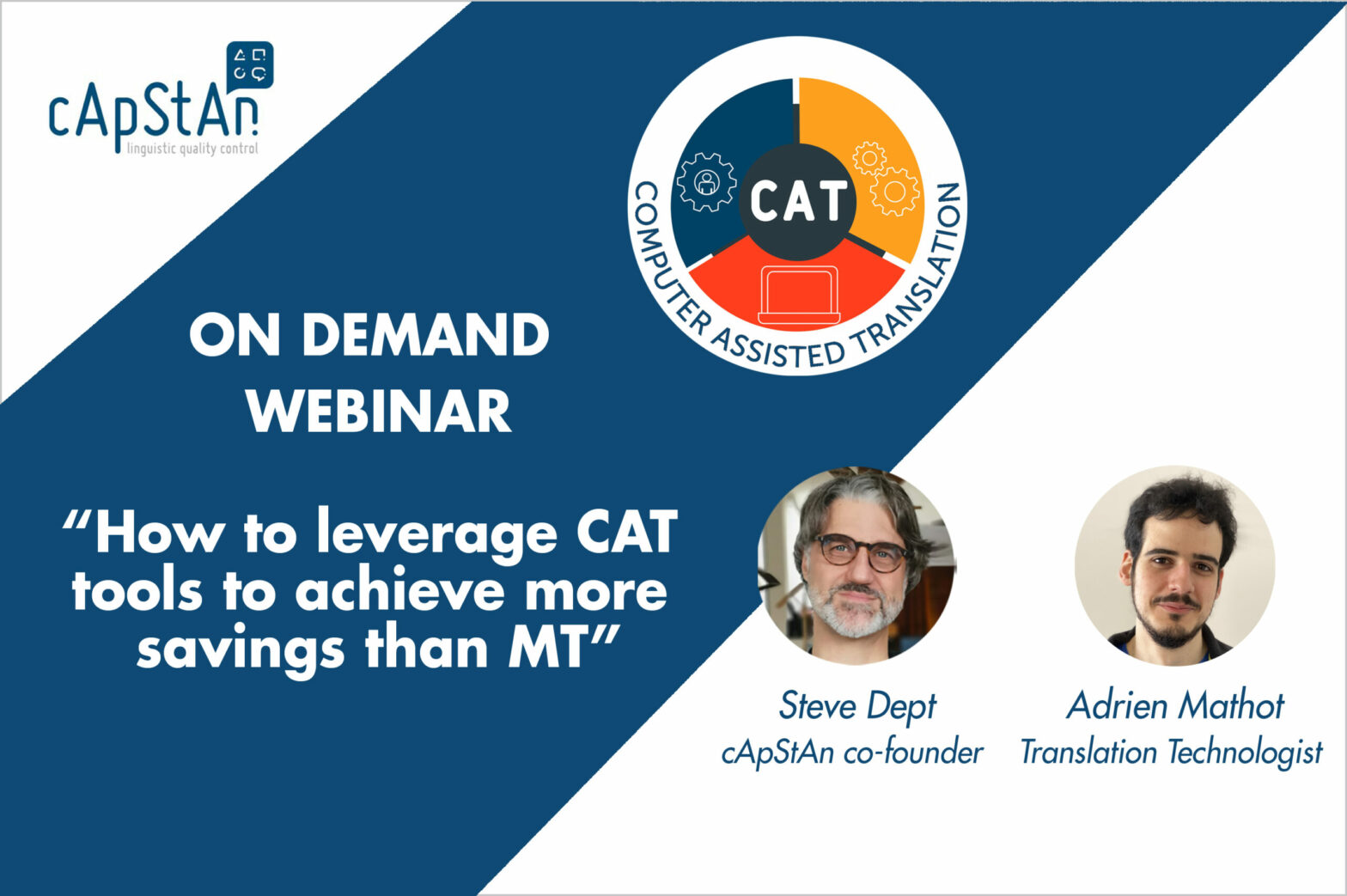
On-Demand Webinar | How to leverage CAT tools to achieve more savings than MT
Computer-assisted translation tools (CAT tools) have been around for 30 years, and they are designed as productivity tools for professional translators. Using CAT tools effectively increases quality, consistency and productivity at scale. Term bases, style guides and translation memories form a powerful combination that (still) give the human translator a competitive edge in terms of quality/price …
“On-Demand Webinar | How to leverage CAT tools to achieve more savings than MT”
Read More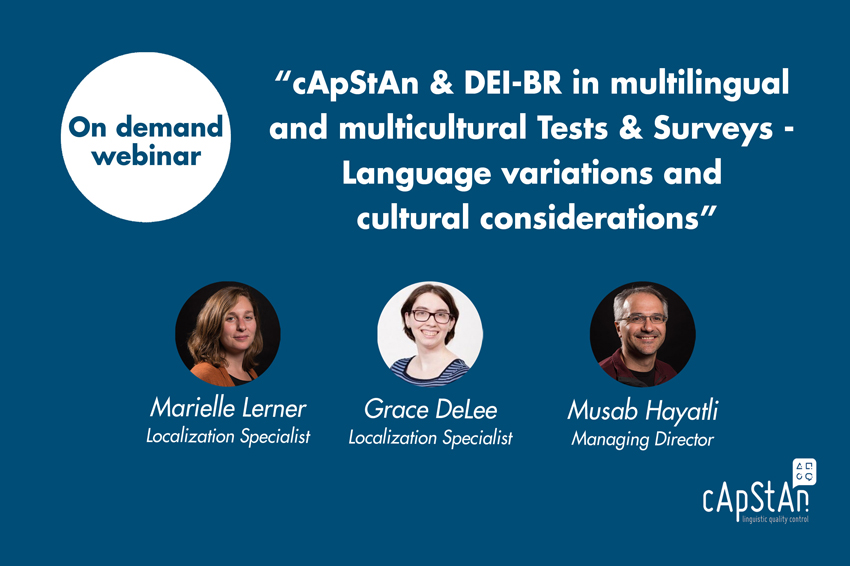
Why you should include DEI-BR filters in your multilingual tests, assessments and surveys — and how cApStAn can support you
by Pisana Ferrari – cApStAn Ambassador to the Global Village Cultures and societies are dynamic and so is awareness of social justice issues. Recent global movements such as #metoo and #blm have shone a light on many of the inequities in the world and highlighted the need to work towards a more inclusive society. Awareness …
Read More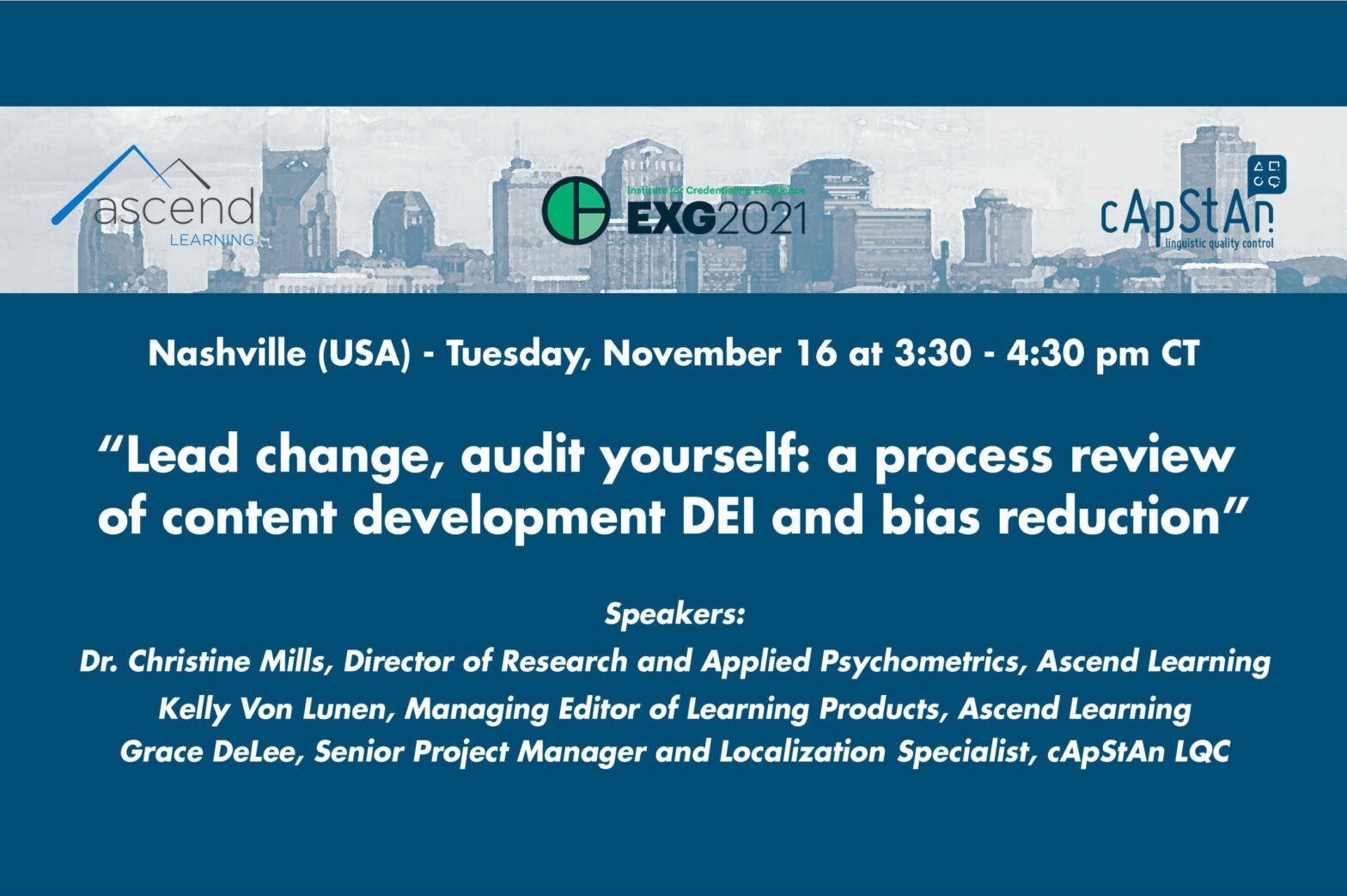
Why diversity, equity and inclusion and bias reduction are important in credentialling: a report from the ICE 2021 conference
by Pisana Ferrari – cApStAn Ambassador to the Global Village Recent social justice movements across the world have raised awareness, on an unprecented level, of the inequities in our society, and have set off a global cultural debate around the themes of diversity, equity and inclusion and bias reduction (DEI-BR). During one of the sessions …
Read More
The Chaos Management Skills Assessment Series: A Test Translation Case Study Episode 2 – Translatability Assessment and item-by-item Translation and Adaptation Notes
by Steve Dept, cApStAn CEO By now, readers of this informative series on good practice in test translation are aware that the Chaos Management Skills Assessment is a fictitious project, which we set up for the exclusive purpose of the series. The purpose is to illustrate the complexity of test translation and the added value …
Read More
A new and more equitable approach to measuring socioeconomic status in international large-scale assessments on student achievement
by Pisana Ferrari – cApStAn Ambassador to the Global Village Socioeconomic status (SES) is a variable that the vast majority of the international large-scale assessments (ILSAs) on student achievement derive from questions about parental occupation, parent’s level of education and their income bracket (or proxy indicators of household income). The student SES information is often …
Read More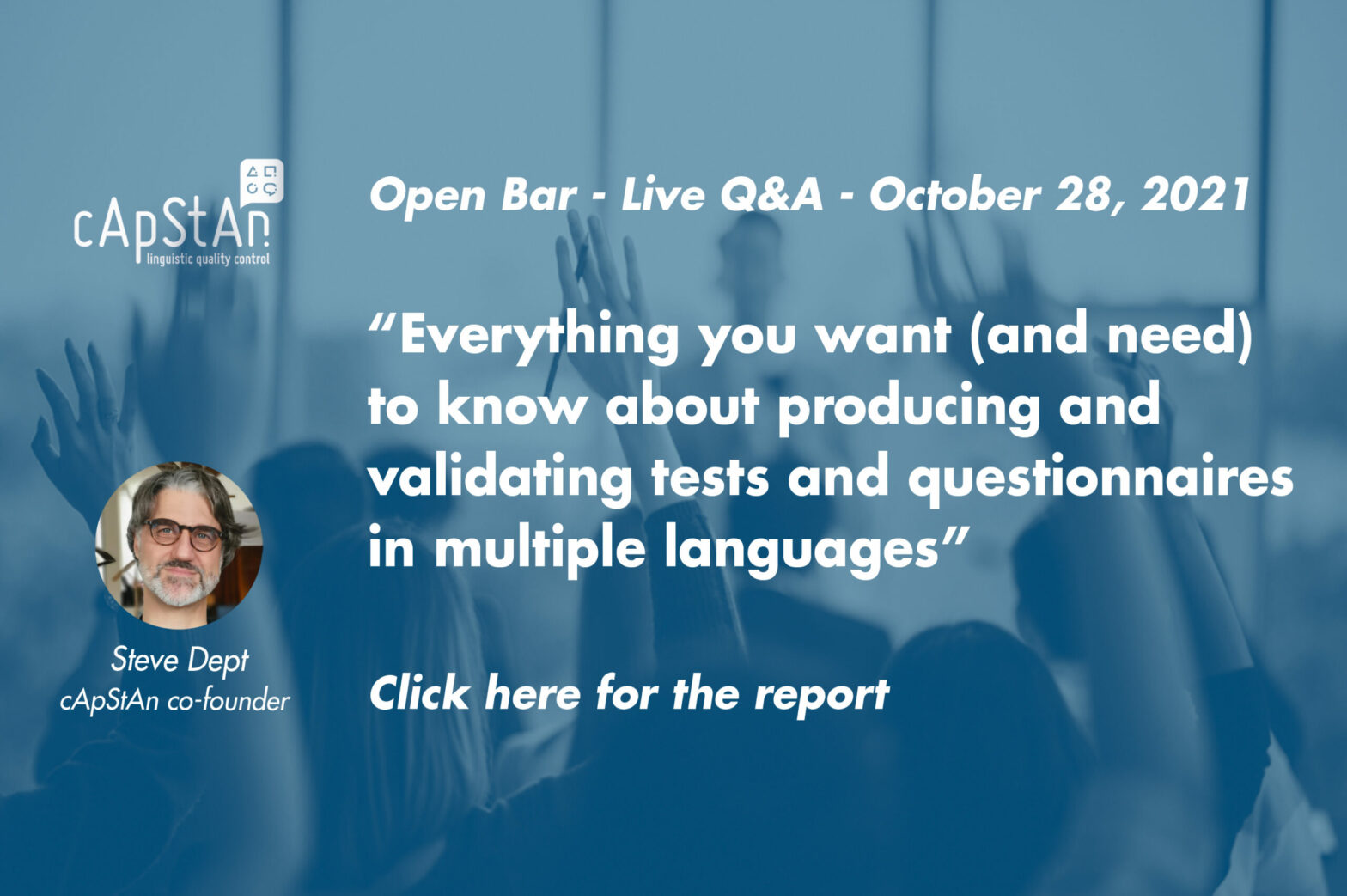
Everything you want (and need) to know about producing and validating tests and questionnaires in multiple languages
by Pisana Ferrari – cApStAn Ambassador to the Global Village Open Bar – Live Q&A – Thursday, October 28, 2021 Our first in the series of cApStAn Open Bar – Live Q&A webinars took place on October 28. Our new format: a very short PowerPoint – with five slides sent to participants in advance– and …
Read More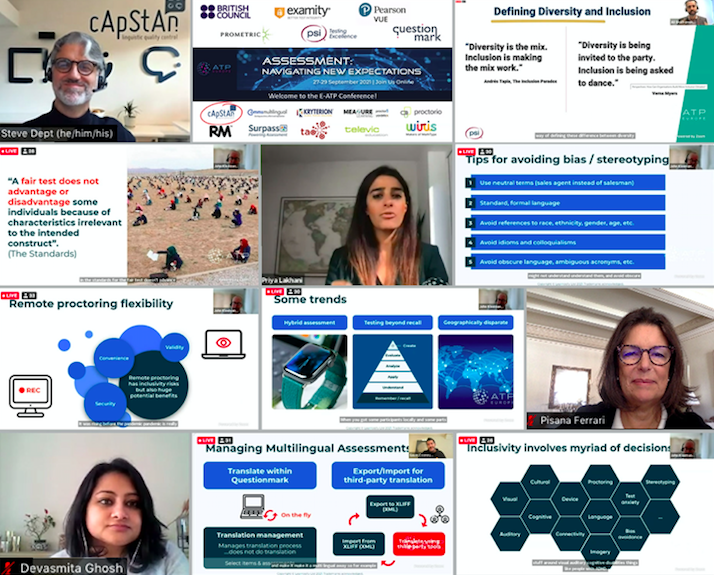
Discussing accessibility, fairness and equity of tests at E-ATP 2021 as we emerge from COVID-19
by Pisana Ferrari – cApStAn Ambassador to the Global Village This year’s edition of the E-ATP conference was a virtual yet vibrant event, where attendees discussed all the facets of disruption in the testing industry due to COVID-19. We attended E-ATP in Dublin (2015), Lisbon (2016), Noordwijk (2017), Athens (2018) and Madrid (2019). cApStAn’s involvement …
“Discussing accessibility, fairness and equity of tests at E-ATP 2021 as we emerge from COVID-19”
Read More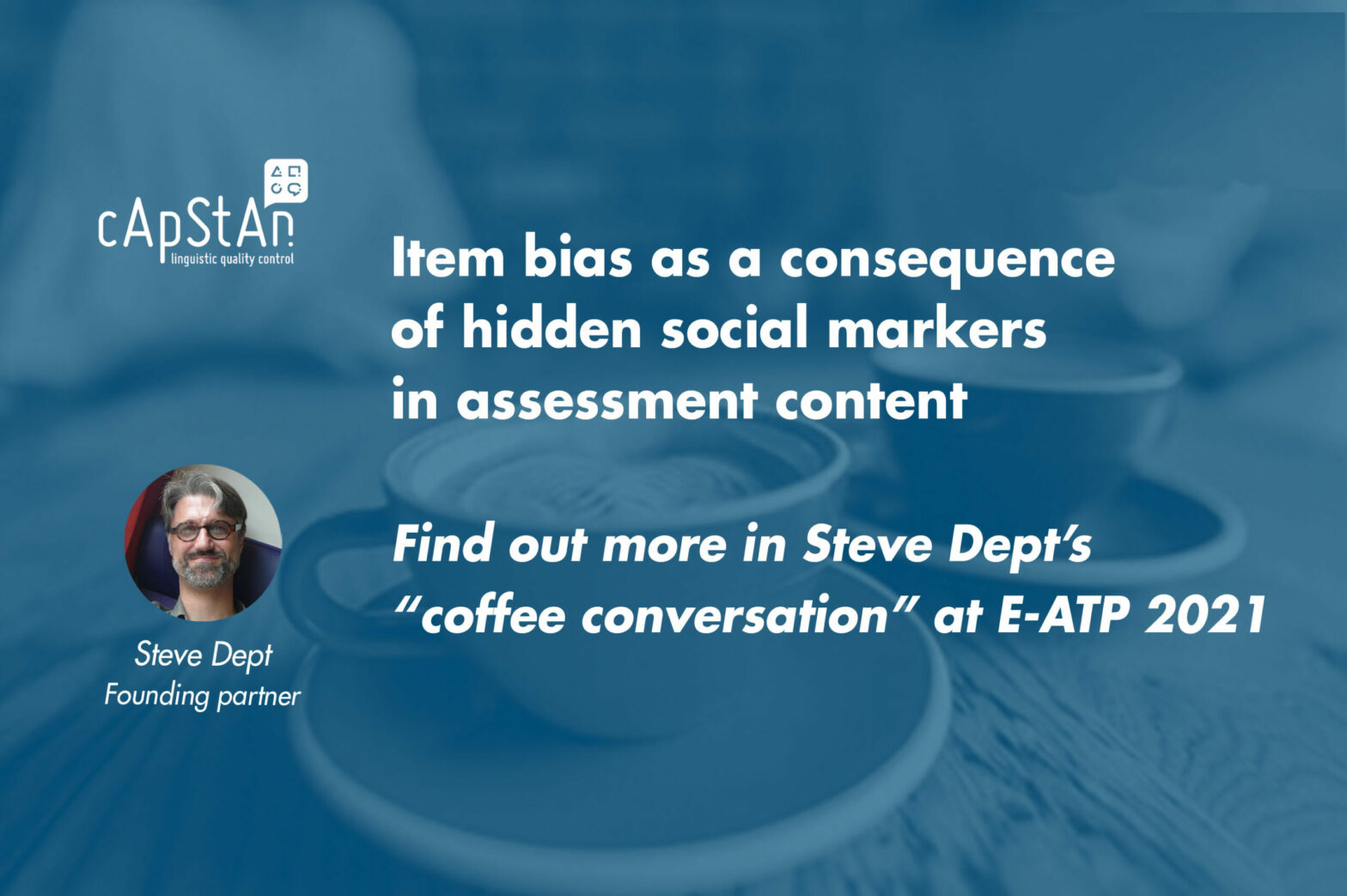
“Item bias as a consequence of hidden social makers in assessment content”. A coffee conversation with cApStAn co-founder Steve Dept at E-ATP 2021
by Pisana Ferrari – cApStAn Ambassador to the Global Village This year’s (virtual) edition of the E-ATP conference, of which cApStAn is a proud sponsor, focussed on the challenges to the testing industry brought on by the COVID-19 pandemic, and how these were met. These include, inter alia, how to address the shift to technology-based …
Read More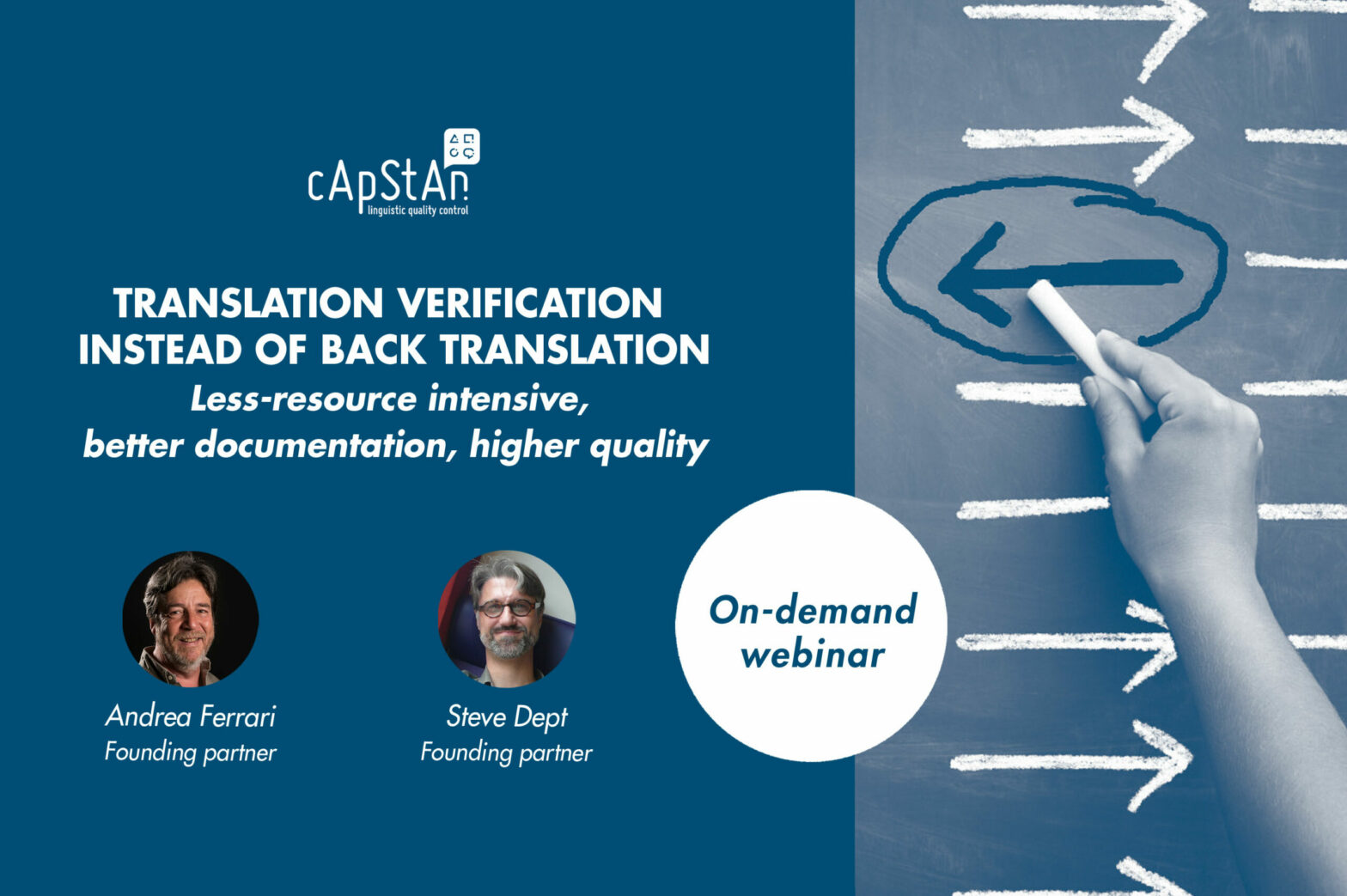
Translation Verification instead of Back Translation
Less-resource intensive | better documentation | higher quality Speakers: cApStAn’s founding partners Steve Dept and Andrea Ferrari Recorded Live on Sept. 22, 2021 | Duration: 1 hr. In this webinar, the speakers will tell you why experts judge that the back translation design is inadequate, but also why the gold standard does not need to be costlier. – To …
“Translation Verification instead of Back Translation”
Read More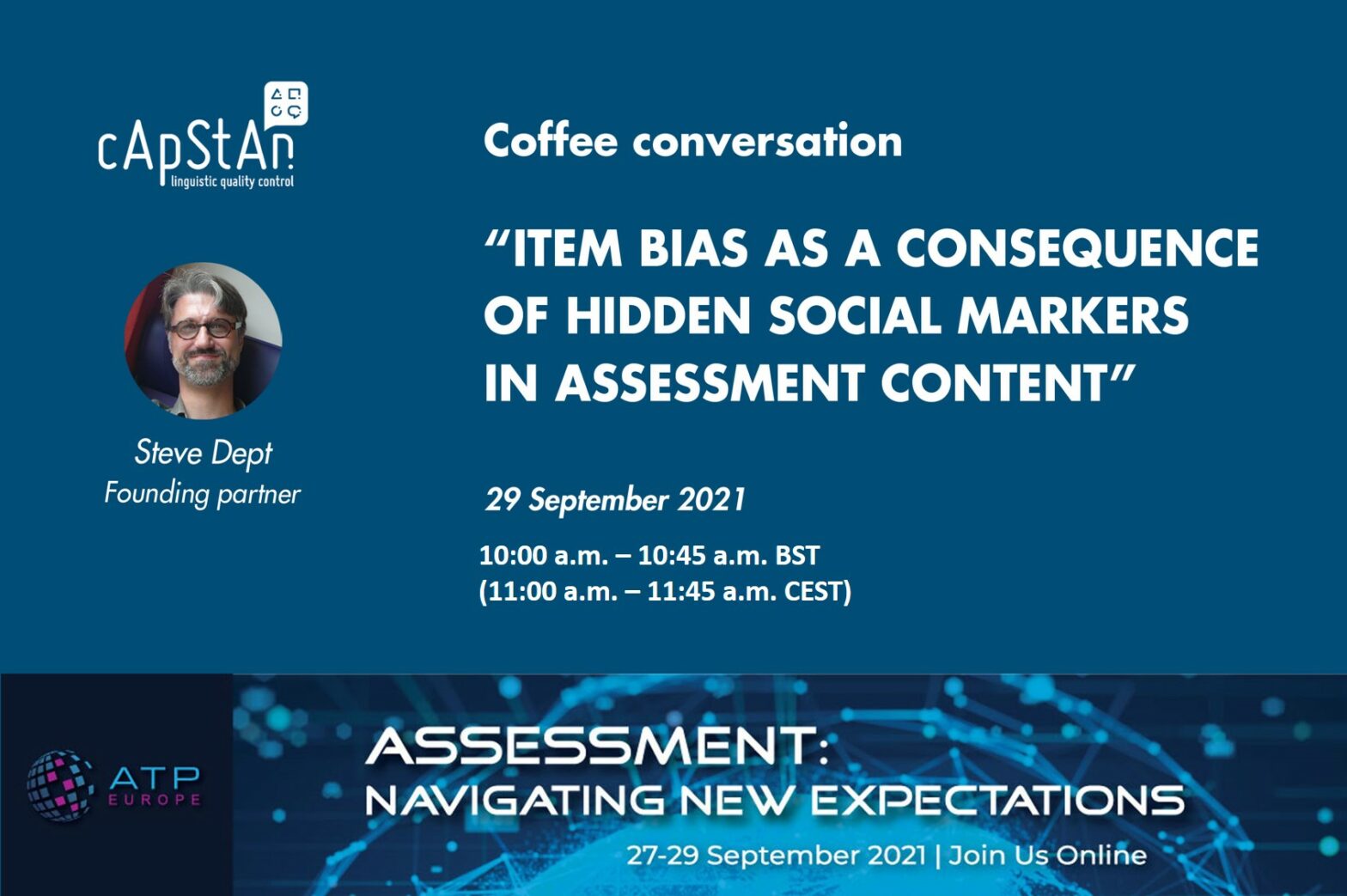
Item bias as a consequence of hidden social markers in assessment content
If part of the assessment content is loaded with (hidden) social markers that tend to privilege candidates from certain types of socio-economical backgrounds, this may introduce construct-irrelevant variance and item bias. cApStAn founder Steve Dept’s coffee conversation at E-ATP 2021 is conceived as an exchange on how to ensure that the content of an assessment …
“Item bias as a consequence of hidden social markers in assessment content”
Read More